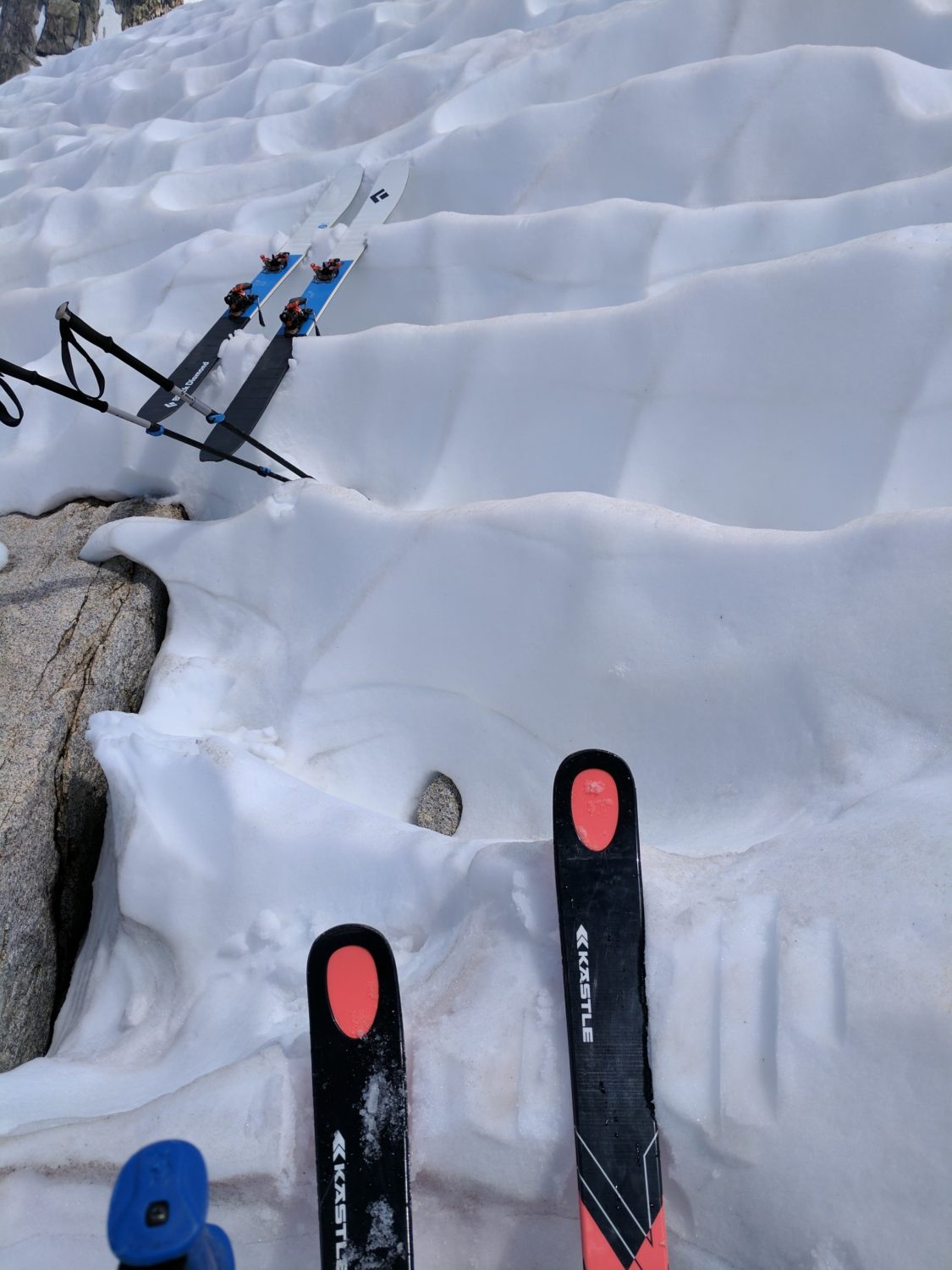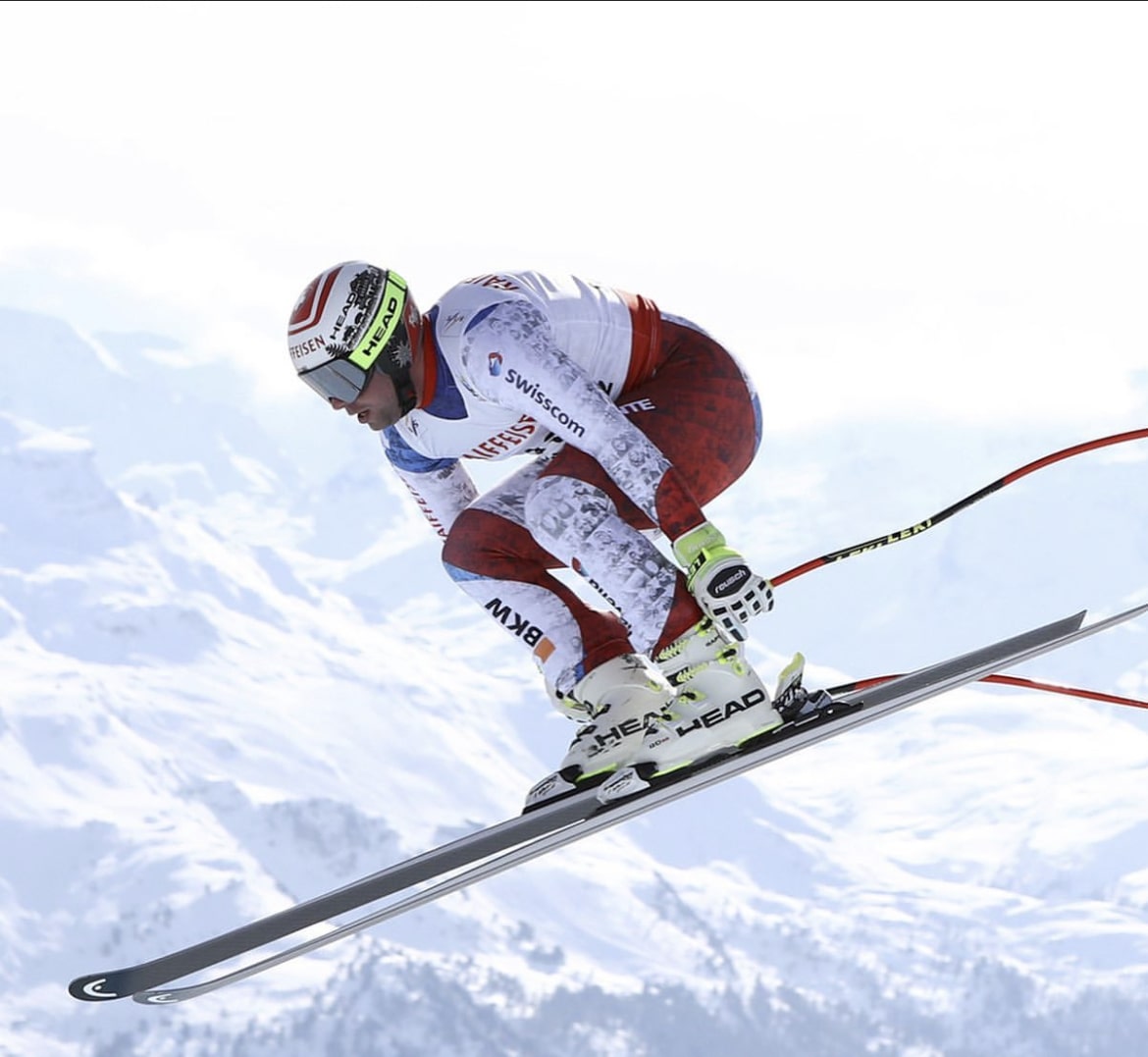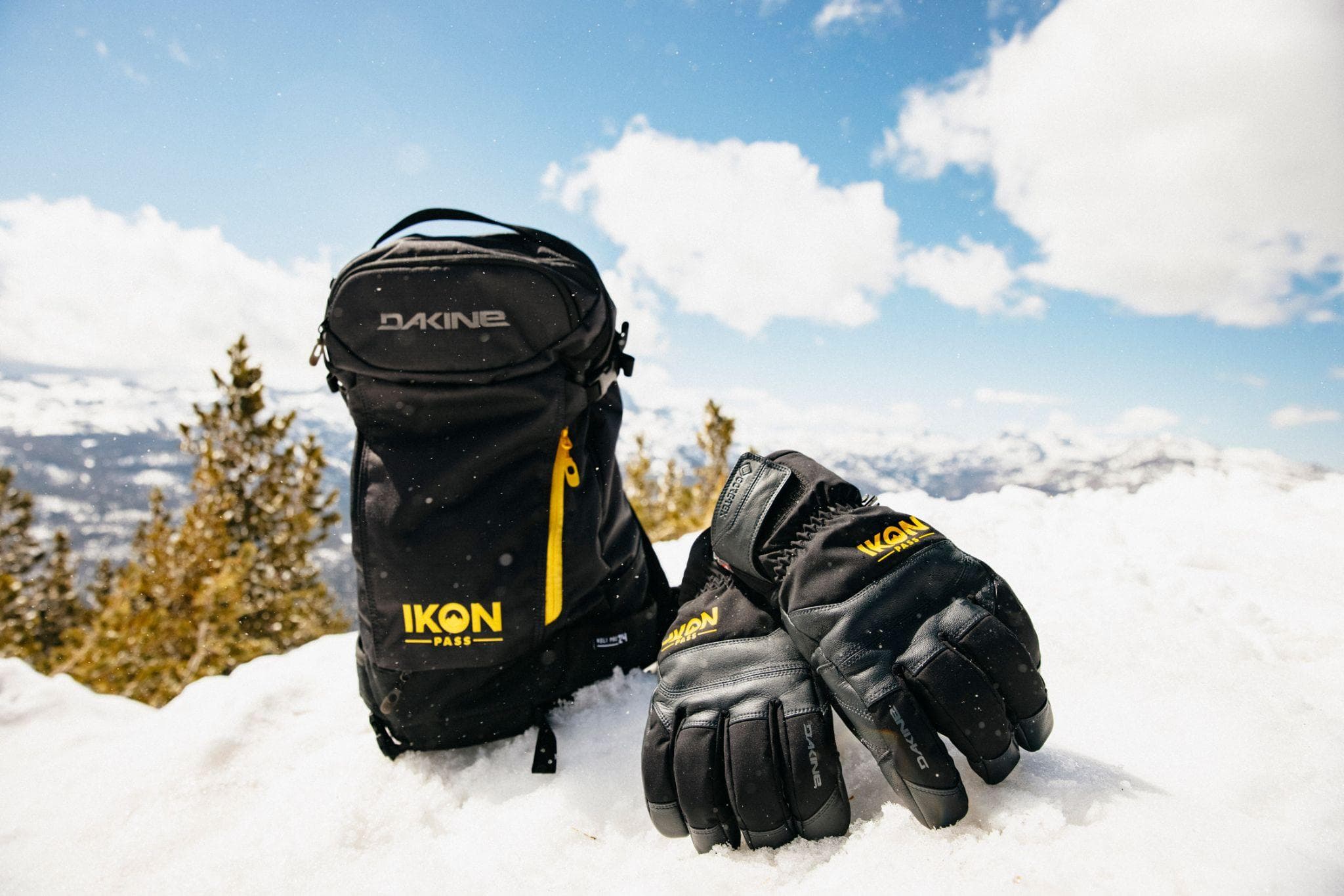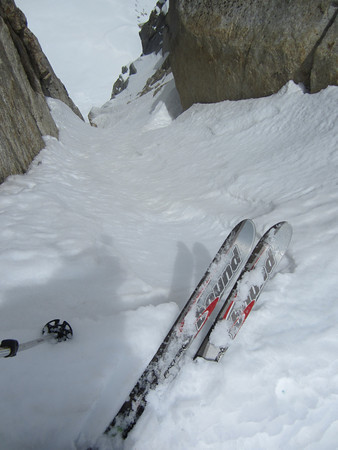
It all started out sounding so chill. Drive up to Tioga pass, see what lines look good, and eke out one more weekend of skiing. Tyler Karow, my partner for the trip, mentioned a couple of routes (including the North Peak couloirs), which I aimlessly googled for beta and checked out on a topo. Our plan was mostly just to head out there and see what was up.
After a 5 am predawn meeting, we hit the road from SF. Stopping quickly in Tuolumne Meadows to pick up a backcountry permit, we made it to the Saddlebag Lake trailhead around 11.
(Note to future skiers/climbers/hikers: the ranger we talked to at Tuolumne Meadows refused to give us beta on the routes we were interested in, and claimed that this was park policy as they didn’t want backcountry travelers to rely on the rangers’ assessment of conditions. In addition they asked for us to stop back by the station on our way out to give them our beta… which they then wouldn’t give out to other backcountry users… So long story short don’t depend on rangers for beta.)

The entire drive through Yosemite, Tyler and I were super stoked on how much snow we saw. Snowline seemed to start between 10k and 11k, and was of course heavily dependent on aspect. It looked like there was tons of good skiing.

At the trailhead, we discussed and decided to go for the couliors coming off of the North face of North Peak. Typically, these are ice climbing routes in the summer, but Tyler had heard that there was still snow on them as of the week before, and I agreed that they sounded fun and worth checking out. Another point in their favor was the short (on paper) approach of around 2.5 miles, which sounded optimal given our late start.

Rounding Saddlebag lake on the left (west) shore, we encountered a number of large snowfields, and decided it would be faster to travel around the longer but drier right (east) shore on the way back. Crossing the snowfields surrounding Steelhead and Cascade lakes (which were very, very full, and mostly frozen over), we got our first glimpse of the North Peak couliors.

Around then, we ran into a group of two climbers who had planned to ice climb the same couliors we were planning to ski. They said that the two rightmost (westmost) couliors had bergschrunds that had prevented them from climbing them, but that they had taken a look at the leftmost (eastmost) coulior, that there was no ‘schrund, and that it looked climbable.
All three couliors looked very aesthetic from a distance, plastered on a massive granite face laced with horizontal dikes.

By this point, my approach shoes and socks were so wet from crossing snowfields that I basically gave up and started just walking through steams where we needed to cross them.

Just getting from the Cascade Lake basin to the bottom of the couliors seemed to be somewhat of a challenge. We briefly considered trying to climb the rocks directly below the couliors, but it looked slabby and at least third class, not something we really wanted to try in approach shoes or touring boots. We instead decided to traverse right up a flatish ridge, and then left across the snowfields, to stay on stuff we were confident we could climb (and downclimb, and navigate in the dark, and not get cliffed out on descending…).
Making our way south across the snowfield directly north of North Peak, we began to size up the couliors. The middle one wasn’t in good shape (two ‘schrunds and it didn’t have snow all the way to the top), so we more or less nixed it without discussion. We were interested in skiing the rightmost coulior, which had a bergschrund, but one that looked possibly crossable from a distance.

Close inspection revealed that the ‘schrund was not, in fact, crossable (at least by us). While I had hoped from a distance that the gap was around 4 feet, it turned out to be more like 8, and very vertically sloped. We briefly considered trying to climb the rock to either side of the route, but the prospect of soloing 15+ feet of 5th class rock in either approach shoes or ski boots, and then getting our gear over the bergschund, all without rope or protection, was a concept too stupid for us to contemplate very long.
So, the left (east) coulior it was. We downclimbed to the entrance, and sat down to look up at it.

I was immediately struck by how steep and exposed the line was and how bad the snow surface looked. It was quite sun cupped, there was dirt and rock peppering the snow, and the snow surface could hardly be called soft. According to Tyler, guidebooks put the slope angle at around 50 degrees. The term “no fall zone” gets thrown around a lot, but in my opinion if a skier or climber slipped and if they failed to self arrest, they would fall onto the rocks at the bottom of the coulior and would likely not survive without major trama. In both my and Tyler’s eyes, this was a gnarly line.
Tyler and I discussed whether or not we wanted to commit to it. We both felt confident in our ability to climb it, but to be honest I wasn’t entirely sure about my ability to ski it. It had been a week since I last skied, both the angle and snow looked really gnarly, and there was a ton of consequence. I decided to ski a few turns on the apron (which had a similar angle and snow) to see how I felt, and was quickly reassured that the snow was at least somewhat skiable.
We started booting up the coulior. Crampons and ice axes were absolutely mandatory. I decided to Voile strap my ice axe to one of my poles to make a kind of ghetto whippet, which had the advantage of allowing me to both use the pick of my ice axe and to keep poles in both hands.

The climb up felt long and very exposed. The slope angle seemed to ease off a little in the middle (although I’d guess that it still stayed north of 50 degrees the whole time), but as we got higher the snow got arguably worse. The first crux of the climb was a set of two rocks about two thirds of the way up, which up close turned up to be fairly easily passable on both crampons and skis. The second crux, which we hadn’t spotted from below, was a narrow choke between a boulder and the wall of the coulior about 20 feet from the top. When we climbed it, the snow strip was probably about two feet wide, and was quickly becoming quite hard as melting water dripped down from above and froze into the snow. In places, I couldn’t even get my ice axe in. Skiing it would be “fun.”

Tyler led the last pitch and (checking for cornices) topped out the route. I followed soon after, and was glad to find a big, flat platform on top, perfect for transitioning. The south slope of North Peak rolled away below us, looking extremely mellow after the route we had just climbed. With very good beta on the route, I could imagine approaching the coulior from the top via this south slope; however, with the coulior looking the way it did that day, there’s just no way I would have dropped in if I hadn’t just climbed it.
Considering the ski descent, the chute wasn’t particularly narrow (maybe 40 feet wide?), except at the two cruxes, which we planned to sidestep. The slope was steepest at the top, eased off a bit around the second crux from the top, and then steepened again at the bottom while slightly changing aspect. It would be a fun (although still somewhat consequential and gnarly) line in fresh snow or corn, but in the current snow conditions it was a very different story. In total, there was perhaps 600 feet of skiing, starting around 11800 feet and ending at about 11200. Locking out the toes was definitely the move.
Both Tyler and I realized we didn’t really want to drop first on this line, so we depended on the time tested method of rochambeau to decide. I (won? lost?) and got the privilege of dropping first.

I ignominiously sideslipped the first (maybe 20 ft) pitch down to the first crux, and sidestepped down, protecting myself with my ice axe. The snow was barely edgable, and narrow enough that my skis hung off of snow on both sides. Thankfully, the rock creating the crux was wide enough to fit my 177 cm skis with maybe a foot to spare (Tyler made it through with his 185s as well). The roughly 600 feet of exposure made navigating the crux all the more enjoyable. In different conditions, better skiers than I could possibly straightline the crux, but with the exposure and current conditions skiing it in that way was just not an option for us.

Andrew McLean, the undisputed god of coulior skiing, has said that backcountry skiing is more side slipping than power ripping. His statement rung awfully true in that coulior.
After Tyler made it down through the first crux, we linked a few hop turns to get down to the second crux. While still not a joke considering the exposure, the second crux was a lot more mellow than the first, and in different conditions, we could have easily made turns around the two rocks. Hopefully neither of us lost too many GNAR points for sideslipping it this time around.

After passing the second and final crux, the coulior opened up a bit, and the bottom seemed within reach. We linked conservative hop turns down the suncupped slope, ice axes in hand, and nerves on high alert. I will not pretend that I skied the line particularly well, and ended up taking my technique cues more from French steep skiers than from modern TGR or MSP rippers.

At times on the last pitch, the skiing even approached being fun. Turns became linkable, and with each successive foot I descended it became easier and easier to push the exposure to the back of my mind.

Coming out of the coulior to meet back up with Tyler (who had passed me between the two cruxes), I was more stoked than I had been in a long, long time. Usually, my stoked thoughts are along the lines of “that was so fun!” but this time were more like “I can’t believe I made it down that thing…”
At this point, it was about six in the evening, and we still had to get out of the backcountry in one piece.

Skiing down the suncupped snowfield to the north of North Peak was absolute garbage, with the suncups approaching two feet deep. After releasing twice I decided just to screw it and walk down.
I will spare you the details of the hike out, which was about equal parts sufferingfest and mountain-wonderfest.

We got back to the car completely wiped out around 9 pm, and cooked up some freeze dried food. We ended up talking to a number of super interesting people that night, including some mountain guides/dirtbads, one of whom coached at Alpine, and a free soloist from Maryland who spends a month in Yosemite every summer.

Originally, we had planned to ski the second day (Sunday), but the line we had just skied left me feeling pretty on edge, and snow conditions just looked bad across the board. After much debating, we ended up deciding to do a quick climb of Mt. Dana before heading home, and to not bring our skis.

Mt. Dana was fun, quick, and very chill compared to the day before. There were a few snowfields to cross and glissade down, but overall it was essentially a summer climb. As the trail is very good, easily accessible, and gets you to 13k pretty quickly, I might use Mt. Dana as an acclimitization hike in the future.
Overall, snow conditions around Tioga pass are not super good. Expect large suncups (of course depending on the aspect) and not very fun approaches. However, there still definitely is snow to be skied, and depending on how low you’re willing to set your standards, there are still 1000+ ft descents to be had. My guess is that we skied one of the steeper lines that is still skiable.

If you are interested in skiing the North Peak couliors, I would preach caution. Under the current conditions, the couliors are very sketchy, and are in my opinion much gnarlier than anything I skied at Squaw this season. There are many skiers out there who could ski these lines far better than we did, so I don’t want to globally dissuade people from skiing them, however, I don’t want to underplay how serious and consequential these lines seemed to me at the time. In addition, the snow is getting worse with each passing day, and these lines are well on their way to becoming the ice climbs they are known to be later in the summer.
However, in winter or spring, these lines would be very fun, although still somewhat gnarly. Of course, when the snow is softer, avalanche danger would become a real concern…
For more information about the climb (specifically, the rightmost coulior which we didn’t ski), you can check out this summitpost page for somewhat climbing focused information, or Andy Lewicky’s winter TR for more skiing focused info. If you do choose to access the backcountry near Tioga pass (or anywhere else) remember to obey all regulations, be respectful of other groups, and to Leave No Trace.



